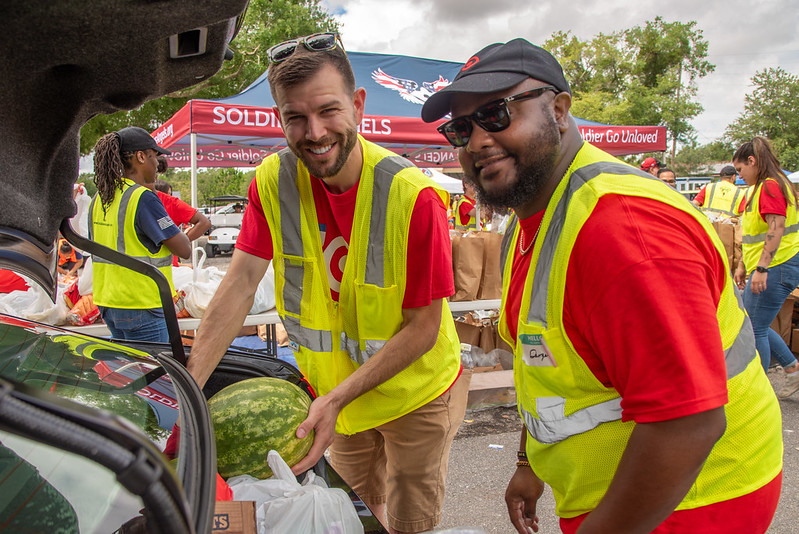St. Augustine National Cemetery in Florida’s “Ancient City” was my next stop along the Atlantic coast. The cemetery is fascinating for many reasons, not least of which are its age and size. NCA will be documenting it for nomination to the National Register of Historic Places starting this year.
The first interment here actually took place in 1828, long before Congress authorized establishment of the national cemeteries in 1862 . Prior to its designation as a national cemetery in 1881, the site was part of a Franciscan monastery and later occupied by military forces from Spain, England and the United States.
The cemetery grounds take up just 1.4 acres—quite small by modern standards. Perhaps because of its size it feels entirely appropriate to its surrounding neighborhood of cottages and larger homes.
The unique Dade Monuments honor Army Veterans of the Seminole Indian Wars. One monument is comprised of three pyramids constructed of native coquina stone; the second is a coquina-and-marble obelisk. A bronze plaque explains: “These three pyramids cover vaults containing the individually unidentified remains of 1468 soldiers of the Florida Indian Wars, 1835-1842.” Major Francis Langhorne Dade, Commander of Company B, 4th Regiment of Infantry, is buried with his men and recognized in the obelisk’s inscription; Miami-Dade County, Florida is his namesake. The pyramids and the obelisk were restored in early 2010 under the American Recovery and Reinvestment Act.
The 1938 Superintendent’s Lodge at St. Augustine National Cemetery is currently occupied by the Florida National Guard, which can trace its own heritage back to 1565. Its headquarters adjoin the cemetery.
Available are photographs of the St. Augustine National Cemetery.
Topics in this story
More Stories
Soldiers' Angels volunteers provide compassion and dedication to service members, Veterans, caregivers and survivors.
Veterans are nearly three times more likely to own a franchise compared to non-Veterans.
The Social Security Administration is hoping to make applying for Supplemental Security Income (SSI) a whole lot easier, announcing it will start offering online, streamlined applications for some applicants.






Where can I find a list of the names inscribed on the monuments?
What are the pyramidal monuments in the pictures?
The three Pyramids are the Dade Pyramids and are the “grouped” burials of 1,468 soldiers who died between 1835-1842 during fignting with the Seminoles. The initial battle killed Major Dade and 103 soldiers under his immediate command. The event was for many years known as the Dade Massacre. Subsequent battles and the hardships cause by diseases across the battlefield resulted in many more deaths over the years. While not common today, this was a burial method used quite frequently all those years ago and many older historic National Cemeteries have similar sites located on their gounds.
Dear Mr. Walters,
As Disabled Vietnam Veteran who just happens to live in St. Augustine, my buttons are busting to see “OUR” National Cemetery featured.
Veteran organizations of St. Johns county banded together as the Veterans Council of St. Johns County, under the leadership of Col. G.E. “Ed” Taylor on July 4, 2001, and has grown to include nearly 30 veteran organizations in St. Johns County.
We spend every Memorial Day at our cemetery to honor our fallen and we have a very large number of wreaths placed in December thanks to donations by our citizens through “Wreaths Across America”.
Thank you for your sharing our beautiful and very historic final resting place for our country’s heroes and sheroes.
As we continue on our journey marking our 450th birthday, rest assured that The Nation’s Oldest City is making sure our military, active and retired, have a very significant part in the celebration and remembrance.